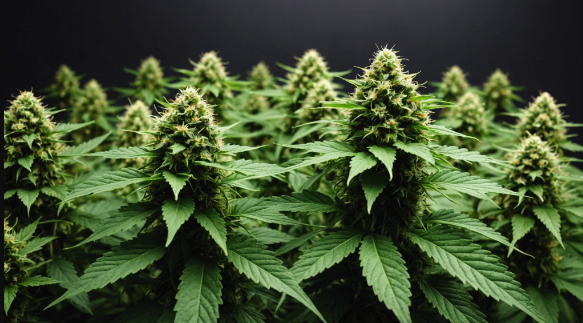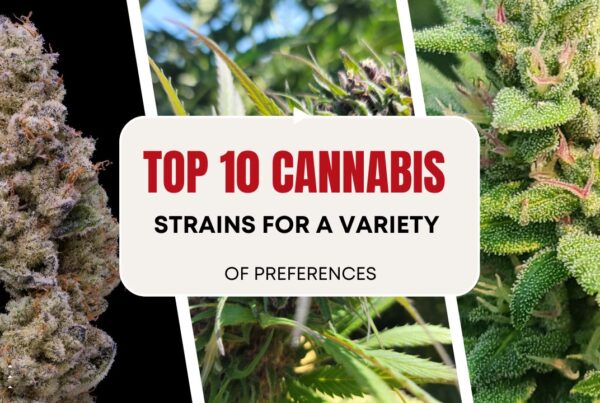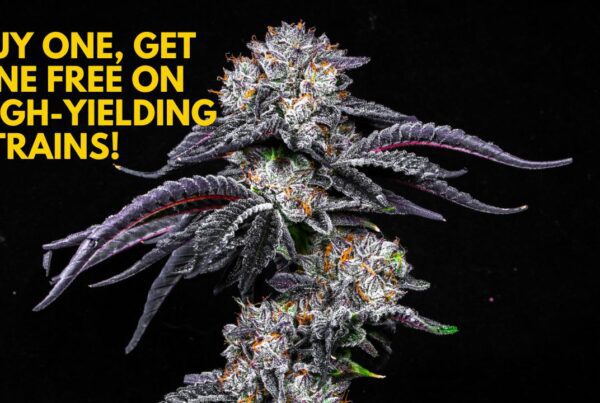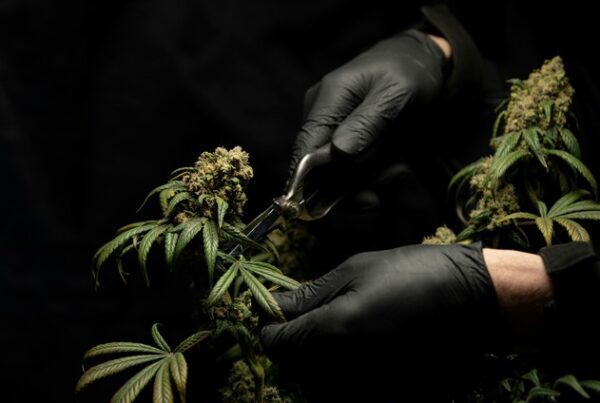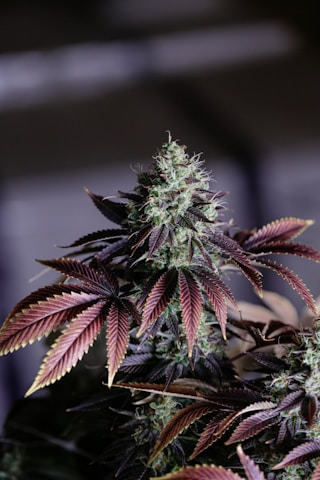Embarking on the Journey of Growing High-Quality Cannabis with Autoflowering Seeds
Embarking on the journey of growing high-quality cannabis with autoflowering seeds can be both exciting and rewarding. Whether you are a seasoned grower or a novice enthusiast, mastering the art of cultivating autoflowering cannabis requires a blend of knowledge, skill, and dedication. In this guide, we will explore top tips and techniques to help you achieve successful yields and potent harvests. From understanding the unique characteristics of autoflowering seeds to optimizing growth conditions and maximizing yields, we will delve into the essential strategies that can elevate your cannabis cultivation experience. By implementing these proven tips, you can unlock the full potential of autoflowering seeds and cultivate top-tier cannabis with confidence. Get ready to embark on a journey of discovery and growth as we uncover the secrets to growing high-quality cannabis with autoflowering seeds.
Optimal Growing Conditions for Autoflowering Cannabis Indoors
When it comes to cultivating autoflowering cannabis indoors, creating the perfect environment is paramount for a successful and abundant harvest. In this section, we will delve deeper into the crucial factors that contribute to the optimal growth of autoflowering cannabis plants.
Lighting and Temperature Requirements:
Lighting plays a fundamental role in the growth and development of autoflowering cannabis. Providing the right amount of light during each growth stage is essential. As mentioned earlier, maintaining a light cycle of 18-24 hours during the vegetative phase and 12-18 hours during flowering is optimal. Additionally, the quality of light is crucial. LED grow lights are highly recommended for indoor cultivation due to their energy efficiency, customizable spectrum, and low heat emission, which helps in maintaining the ideal temperature range of 70-85°F (21-29°C).
Nutrient Management:
Nutrient management is a critical aspect of growing healthy autoflowering cannabis plants. Apart from the NPK ratio, it is essential to consider micronutrients like calcium, magnesium, and iron. These elements play a vital role in various physiological processes of the plant. Monitoring the pH levels of the growing medium is also crucial to ensure proper nutrient uptake. Remember, a well-fed plant is a happy plant!.
Space Utilization:
Efficient use of space is key, especially when working with limited indoor areas. Techniques like super cropping, main-lining, and defoliation can help maximize light penetration and airflow within the canopy. Moreover, implementing a perpetual harvest system can ensure a continuous supply of fresh buds. Utilizing smart pots or fabric containers can also enhance root aeration and prevent overwatering.
Air Circulation and Humidity Control:
Proper air circulation is vital for preventing mold and mildew growth. Investing in oscillating fans or a ventilation system can help maintain a healthy airflow within the grow space. Additionally, controlling humidity levels between 40-60% is crucial to prevent issues like bud rot and pest infestations.
Pest and Disease Management:
Preventing and managing pests and diseases is essential for the overall health of autoflowering cannabis plants. Implementing integrated pest management strategies, such as using beneficial insects like ladybugs or neem oil, can help control common pests like spider mites or aphids. Regularly inspecting plants for any signs of disease or infestation and promptly addressing them is crucial to prevent widespread damage.
Training Techniques:
Training techniques like low-stress training (LST) or high-stress training (HST) can help shape the plant’s growth, improve light distribution, and increase bud production. LST involves gently bending and securing plant branches to encourage horizontal growth and create an even canopy. On the other hand, HST techniques like topping or fimming involve more drastic pruning to promote bushier growth and multiple bud sites.
By focusing on these additional aspects of growing conditions, indoor cultivators can further optimize their autoflowering cannabis plants’ growth, leading to a successful and rewarding cultivation experience.
Successful Techniques for Harvesting Autoflowering Cannabis Indoors
When it comes to harvesting autoflowering cannabis indoors, there are several key techniques that can help you achieve a successful and bountiful harvest. In this section, we will discuss two important aspects of the harvesting process: timing and trimming tips, as well as drying and curing methods.
Timing and Trimming Tips:
-
Monitor Trichomes: One of the most crucial steps in harvesting autoflowering cannabis is to monitor the trichomes. Trichomes are the tiny, crystal-like structures that develop on the buds and contain the highest concentration of cannabinoids. To determine the best time to harvest, look for trichomes that have turned milky white or amber in color.
-
Trim with Precision: Proper trimming is essential for maximizing the quality of your harvest. Remove any large fan leaves and trim away excess foliage to allow for better airflow and light penetration. Be sure to use clean, sharp scissors to avoid damaging the delicate buds.
Drying and Curing Methods:
-
Dry in a Dark, Well-Ventilated Space: After harvesting, it’s important to dry your cannabis buds properly to prevent mold and mildew growth. Hang the trimmed buds upside down in a dark, well-ventilated room with a temperature of around 60-70°F and a humidity level of 45-55%.
-
Cure for Enhanced Flavor and Potency: Once the buds are dry to the touch, it’s time to cure them. Place the buds in glass jars, filling them about three-quarters full. Store the jars in a cool, dark place and burp them daily for the first two weeks to release excess moisture. Curing your cannabis for at least two weeks will enhance its flavor, aroma, and potency.
Additional Tips for Successful Harvesting:
-
Proper Lighting: During the flowering stage, ensure your autoflowering cannabis plants receive adequate light. LED grow lights are a popular choice for indoor cultivation as they provide the necessary spectrum for optimal growth and bud development.
-
Nutrient Management: Pay close attention to the nutrient needs of your plants throughout the growing cycle. Using a balanced fertilizer specifically formulated for cannabis can help ensure healthy growth and robust bud production.
-
Pest Prevention: Regularly inspect your plants for signs of pests such as spider mites or aphids. Implementing preventive measures like neem oil sprays or introducing beneficial insects can help keep your plants pest-free.
-
Proper Harvesting Tools: Invest in high-quality trimming scissors and gloves to make the harvesting process more efficient and precise. Clean your tools regularly to prevent the spread of pathogens and maintain the quality of your buds.
By incorporating these additional tips into your harvesting routine, you can further enhance the quality and yield of your autoflowering cannabis crop. Remember, attention to detail and consistency in care are essential for successful indoor cultivation.
Advantages of Growing Autoflowering Cannabis Outdoors
When it comes to cultivating cannabis, many growers are turning to outdoor cultivation for various reasons. In this section, we will explore the advantages of growing autoflowering cannabis outdoors.
Natural Benefits of Outdoor Cultivation:
Outdoor cultivation offers several natural benefits for autoflowering cannabis plants. These plants receive direct sunlight, which is essential for their growth and development. Additionally, outdoor cultivation allows plants to benefit from natural airflow, which can help prevent mold and mildew issues. The exposure to natural elements like wind and rain can also contribute to stronger plant structures and potentially higher resin production, leading to more potent buds.
Selecting the Right Outdoor Autoflower Strain:
Choosing the right autoflower strain for outdoor cultivation is crucial for a successful harvest. Factors to consider include the climate of your region, the average sunlight exposure, and the desired effects of the strain. Some popular outdoor autoflower strains include Northern Lights, Blueberry, and Amnesia Haze. It’s important to note that certain strains may be more resilient to specific weather conditions, so selecting a strain that suits your local climate can greatly impact the overall yield and quality of your harvest.
Outdoor Growing Tips:
To maximize the potential of your outdoor autoflowering cannabis plants, consider the following tips: – Ensure your plants receive at least 6-8 hours of direct sunlight daily. Adequate sunlight exposure is crucial for healthy plant growth and robust bud development. – Use high-quality soil with proper drainage to promote healthy root development. Well-draining soil helps prevent waterlogging, which can lead to root rot and other issues. – Monitor moisture levels closely and water your plants as needed, taking care not to overwater. Overwatering can suffocate the roots and create an environment conducive to mold and mildew growth. – Protect your plants from pests and diseases by regularly inspecting them and using organic pest control methods. Prevention is key to maintaining a thriving outdoor cannabis garden.
Growing autoflowering cannabis outdoors provides a unique opportunity to connect with nature and cultivate high-quality buds with distinct flavors and effects. By leveraging the natural benefits of outdoor cultivation and implementing proper growing techniques, you can enjoy a rewarding and bountiful harvest of autoflowering cannabis.
Maximizing Yields with High-Quality Autoflowering Seeds
Autoflowering seeds have revolutionized the cannabis cultivation industry, offering a convenient and efficient way to grow high-quality plants. To maximize yields with autoflowering seeds, it is crucial to understand the importance of seed genetics, implement strategies for yield enhancement, and overcome common yield challenges.
Importance of Seed Genetics:
The foundation of a successful harvest begins with selecting high-quality autoflowering seeds. Genetics play a significant role in determining the plant’s growth characteristics, yield potential, and overall quality. By choosing seeds from reputable breeders known for stable genetics and desirable traits, growers can set the stage for a bountiful harvest. Additionally, understanding the specific genetic traits of autoflowering seeds, such as their ability to transition from vegetative to flowering stage based on age rather than light cycles, can help growers optimize their cultivation practices for maximum yields.
Strategies for Yield Enhancement:
Several strategies can be employed to enhance yields when growing autoflowering seeds. In addition to environmental factors and nutrient management, techniques like low-stress training (LST) and high-stress training (HST) can be utilized to manipulate plant growth, increase light exposure to lower bud sites, and ultimately boost yields. Furthermore, utilizing advanced cultivation methods such as hydroponics or aeroponics can provide precise control over nutrient delivery and optimize plant growth for higher yields. Growers can also explore the benefits of companion planting to improve soil health, enhance nutrient uptake, and increase overall plant resilience, leading to improved yields.
Overcoming Yield Challenges:
While autoflowering seeds offer many benefits, they are not without challenges. Growers may encounter issues like pH imbalances, heat stress, or inadequate light intensity, which can impact plant health and reduce yields. Implementing proactive measures such as regular monitoring of pH levels, proper ventilation to control temperature, and supplemental lighting can help mitigate these challenges and ensure optimal growth conditions for autoflowering plants. Additionally, integrating beneficial insects for pest control and organic pest management practices can safeguard plants against common pests without compromising yield quality. Growers can also explore the benefits of using organic amendments and microbial inoculants to improve soil structure, enhance nutrient availability, and promote beneficial microbial activity, ultimately leading to increased yields and improved plant health.
By combining knowledge of seed genetics, effective yield enhancement strategies, proactive problem-solving approaches, and innovative cultivation techniques, growers can successfully maximize yields with high-quality autoflowering seeds and achieve abundant harvests of premium cannabis buds.
Nutrient Management for High-Quality Autoflowering Cannabis
When it comes to cultivating high-quality autoflowering cannabis, mastering nutrient management is a crucial factor that can significantly impact the overall success of your grow. By understanding the specific nutrient needs of autoflowering plants, selecting the best nutrient options, and effectively avoiding common deficiencies, growers can optimize their yields and produce top-tier buds that are potent and flavorful.
Understanding Nutrient Needs:
Autoflowering cannabis plants have unique nutritional requirements due to their rapid growth cycle and compact size. These plants thrive on a well-balanced diet of essential macronutrients like nitrogen, phosphorus, and potassium, along with vital micronutrients such as calcium, magnesium, and iron. It is essential for growers to tailor their feeding schedules to meet the changing demands of autoflowering strains throughout the different growth stages, ensuring robust plant health and vigorous bud development.
Best Nutrient Options:
Selecting the right nutrients is paramount in achieving optimal results with autoflowering cannabis. High-quality organic blends, hydroponic solutions, and mineral-based fertilizers formulated specifically for autoflowering plants are recommended. Growers can also enhance nutrient uptake and plant metabolism by incorporating supplements containing beneficial additives like amino acids, enzymes, and vitamins. These additives can promote healthy growth, improve nutrient absorption, and contribute to the production of resinous, high-quality buds.
Avoiding Nutrient Deficiencies:
Nutrient deficiencies can hinder plant growth and diminish yields if not addressed promptly. To prevent issues such as yellowing leaves or stunted growth, growers should maintain the pH levels of the growing medium within the optimal range, regularly test nutrient concentrations, and adjust feeding schedules based on plant responses. By closely monitoring their plants and proactively addressing any signs of deficiency, growers can ensure that their autoflowering cannabis crops remain healthy and productive, ultimately leading to a successful harvest of premium-quality buds.
Pest and Disease Management in Autoflowering Cannabis Cultivation
Autoflowering cannabis plants are known for their quick growth and ease of cultivation. However, like all plants, they are susceptible to pests and diseases that can hinder their growth and reduce yields. In this section, we will discuss the common pests and diseases that affect autoflowering cannabis plants, preventive measures to keep them at bay, and treatment options if your plants do get infested.
Identifying Common Pests and Diseases
Autoflowering cannabis plants can fall victim to a variety of pests, including spider mites, aphids, whiteflies, and caterpillars. These pests can damage the plants by feeding on the leaves, stems, and buds, leading to stunted growth and reduced yields. Additionally, diseases such as powdery mildew and bud rot can also affect autoflowering cannabis plants, especially in humid environments.
Preventive Measures
To prevent pest infestations and diseases, it is essential to maintain a clean and healthy growing environment. Regularly inspect your plants for any signs of pests or diseases, such as yellowing leaves, webbing, or spots on the foliage. Implementing good hygiene practices, such as removing dead leaves and debris, can help reduce the risk of infestations. Additionally, using organic pest control methods, such as neem oil or insecticidal soap, can deter pests without harming the plants.
Treatment Options
If despite your best efforts, your autoflowering cannabis plants do get infested, there are several treatment options available. For pest infestations, you can use insecticidal sprays or introduce beneficial insects, such as ladybugs, that feed on pests. For diseases, removing and destroying affected plant parts can help prevent the spread. In severe cases, fungicides or other chemical treatments may be necessary, but it is essential to follow the instructions carefully to avoid harming the plants or the environment.
Additional Tips for Pest and Disease Management
Apart from regular inspection and hygiene practices, there are other strategies you can employ to manage pests and diseases effectively in your autoflowering cannabis cultivation. One such method is companion planting, where you grow pest-repelling plants alongside your cannabis to deter common pests. Marigolds, for example, are known to repel nematodes and other harmful insects. Additionally, maintaining proper air circulation around your plants can help reduce the risk of fungal diseases like powdery mildew.
Furthermore, practicing crop rotation can disrupt pest life cycles and reduce the buildup of pathogens in the soil. By alternating cannabis with other crops, you can help break the cycle of pests and diseases that target autoflowering cannabis plants specifically. Additionally, using beneficial microbes in the soil can enhance plant immunity and outcompete harmful pathogens, promoting overall plant health.
Conclusion
Pest and disease management is a crucial aspect of successful autoflowering cannabis cultivation. By staying informed about common pests and diseases, implementing preventive measures, and having effective treatment options in place, you can safeguard your plants and ensure a bountiful harvest. Remember that early detection and prompt action are key to mitigating the impact of pests and diseases on your autoflowering cannabis plants. With proper care and attention, you can enjoy a thriving garden of healthy autoflowering cannabis plants.
Conclusion
Mastering the art of growing high-quality cannabis with autoflowering seeds requires a blend of knowledge, dedication, and the right resources. By exploring the benefits of fast flowering weed seeds and understanding the nuances between different strains, growers can elevate their cultivation practices to new heights. The webpage at. JG Seeds Serves as a valuable resource, offering insights into fast flowering strains, cultivation techniques, and notable varieties. Whether you’re a novice or an experienced cultivator, the information provided can guide you towards successful harvests and a diverse range of cannabis experiences. Take the next step in your cannabis cultivation journey by visiting the webpage and unlocking the potential of fast flowering seeds.

